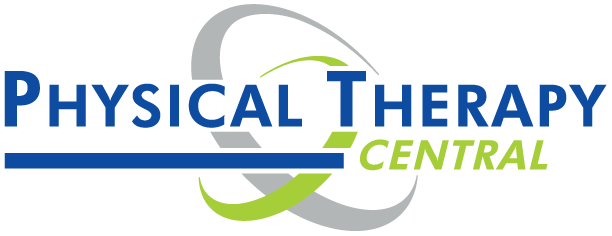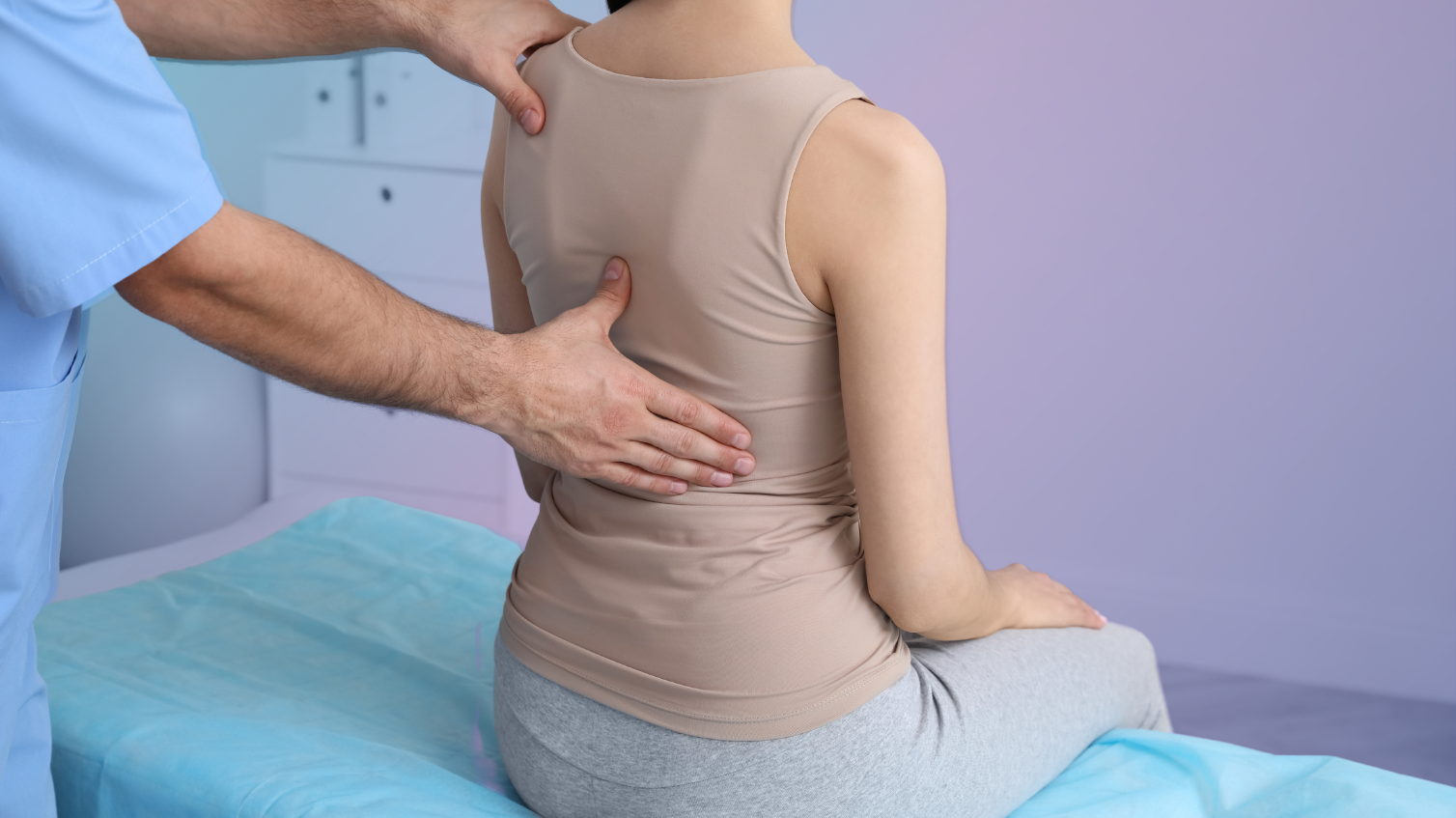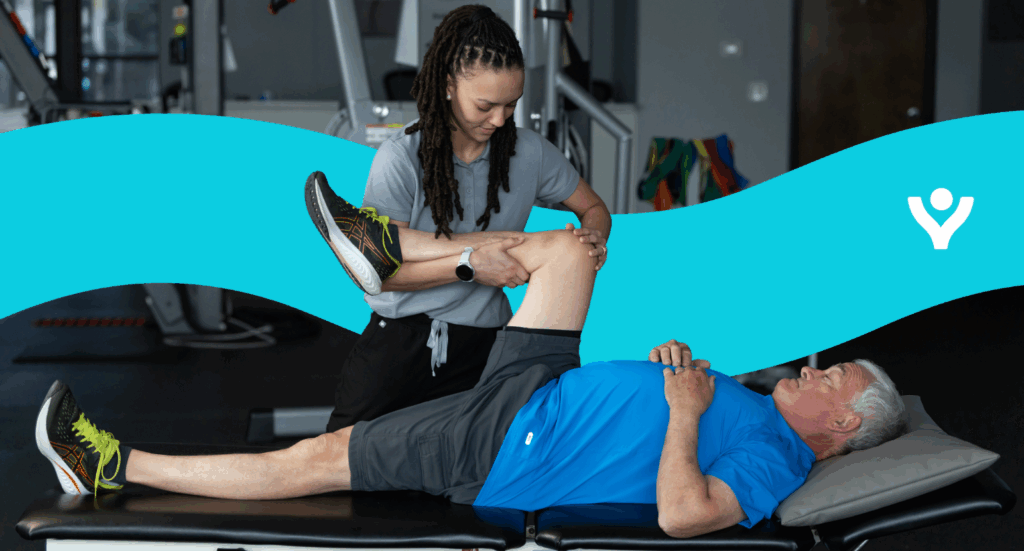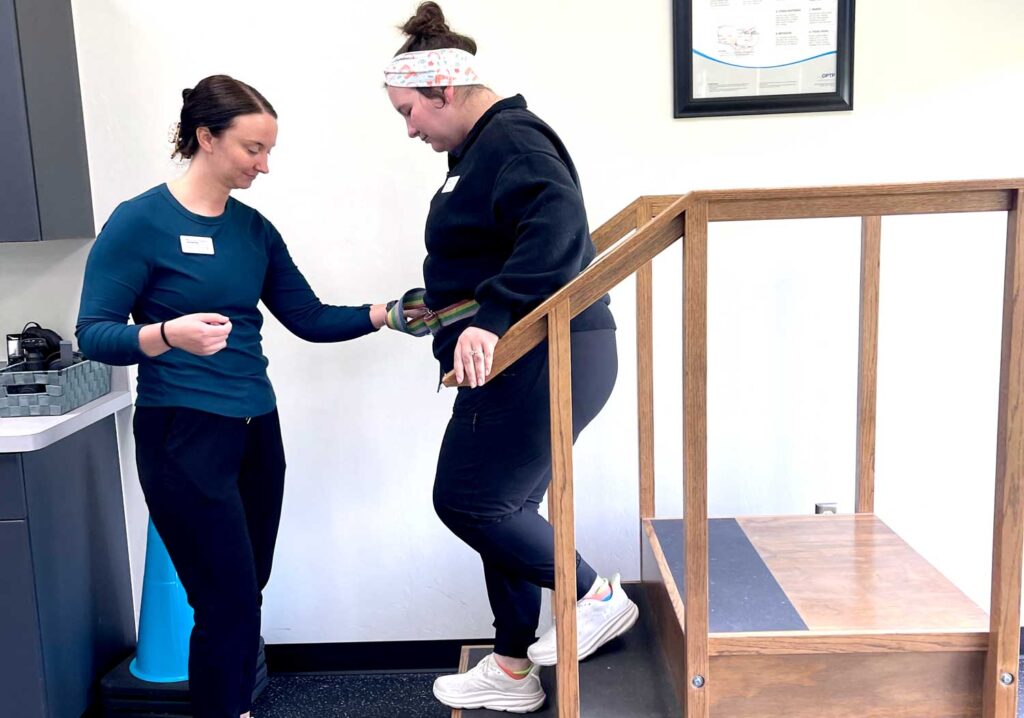What is Degenerative Scoliosis?
Degenerative scoliosis is a medical condition involving an atypical curvature of the spine in an “S” or “C” curve and affects 2 to 3% of the population, or around 7 million people, of the United States, according to the National Scoliosis Foundation. The most common region of the back affected is the lumbar spine, or lower back area, according to Dr. Devin Trachman, PT, DPT, MTC, OCS, Clinic Director of Physical Therapy Central’s Edmond West Clinic.
How does it Occur and Who Experiences it?
It is most typically the result of deterioration of spinal discs and connective tissues because of aging and prolonged use. According to Dr. Trachman, some factors that increase the chance of having degenerative scoliosis include:
- 65 years of age and older
- Family history; hereditary
- Being overweight or obese
- Smoking, history of smoking, or currently smoking
- Individuals with osteoporosis
- Females are more likely than males
- Having a job that requires heavy manual labor places a higher strain on the spine
Can Degenerative Scoliosis Be Prevented?
According to Dr. Trachman, there is currently no way to prevent degenerative scoliosis, but there are strategies to reduce the risk and slow the progression, including:
Exercise
- Core and back strengthening
- Low-impact cardio
- Yoga, pilates, barre, etc., focus on stability, flexibility and balance.
Proper posture
- Practice good posture in all positions: sitting, standing, and during functional movement patterns like bending, squatting, or lifting.
Overall Health
- Avoid Smoking as it can increase the degenerative process of the spine.
- Maintain a healthy weight to prevent excess stress and strain on your body.
- Eat healthy, whole foods to ensure essential vitamins and minerals.
Can Degenerative Scoliosis Be Treated?
“Generally, the treatment becomes symptom management,” says Dr. Trachman. “I have had many patients over the years that did not have symptoms associated with their scoliosis. In fact, many patients come to physical therapy for other impairments unrelated. However, symptoms associated with degenerative scoliosis can include back and/or leg pain; uneven leg length, waist, hips or shoulders; loss in height; tendency of leaning to one side or head not being centered above the pelvis.”
Depending on the nature of the scoliosis, a variety of treatments could be implemented, including:
- Conservative care
- Physical therapy
- Wearing a brace
- Pain management
- Healthy lifestyle modifications
- Surgical care (spinal fusion, osteotomy, decompression, vertebral column resection, or placement of instrumentation like an expandable rod, screws, or plates)
Exercises and Stretches for Scoliosis
Cat-Cow (or cat-camel) Stretch
- Begin on your hands and knees with your hands below your shoulders and your knees below your hips.
- Arch the upper portion of your back as much as you can while bringing your head toward your chest.
- Return to the starting position, and immediately arch the lower portion of your spine so that your stomach comes toward the floor while simultaneously raising your head.
- Repeat for 3 sets of 10 reps.
Child’s Pose
- Begin on all fours on your hands and knees.
- Pushing back with your hands, bring your hips towards your heels and your chest towards the floor while relaxing your head.
- Hold for 30 seconds and repeat 3 times.
Thread the Needle Stretch
- Begin on all fours on your hands and knees.
- Reach one hand under and across your body, allowing your head and shoulders to follow.
- Reach your hand upwards towards the sky, ensuring your head and trunk follow the rotation.
- Repeat for 3 sets of 5-8 reps/side.
Tip: Make sure your eyes are following the movements of your hand.
Side Bend Stretch
- Begin standing with your arms at your sides.
- Keeping your spine in line front to back, bend slightly sideways, sliding your hand down the side of your leg.
- Hold, then return to the starting position and repeat on the opposite side.
- Repeat for 2-3 sets of 10 reps/side.
Pelvic Tilts
- Begin lying on your back with your knees bent, feet on the floor, and your hands on your hips.
- Engage your lower belly, tilting the front of your pelvis towards your face.
- Return to starting position.
- Repeat for 2-3 sets of 10 reps.
Schedule an Appointment
If you’re experiencing degenerative scoliosis or have any questions, please schedule an appointment with a Physical Therapy Central physical therapist. Your health and safety are our top priorities. For the full article, please follow this link: Degenerative Scoliosis: Doctors Explain the Age-Related Condition and Offer Tips for Management.



